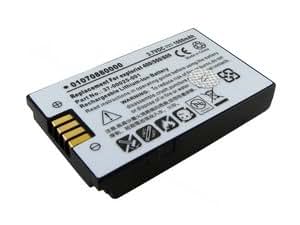Let’s face it: nobody wants a dead GPS tracker. Whether you’re using it to monitor your assets, track your vehicle, or ensure the safety of a loved one, a drained battery can be a major headache. This article dives deep into the strategies and techniques you can employ to maximize your GPS tracker’s battery life, keeping it running smoothly and providing you with reliable data for longer.
Understanding Your GPS Tracker’s Power Consumption
Before we jump into optimization tips, it’s crucial to understand what drains your GPS tracker’s battery in the first place. The primary culprits are the GPS receiver (constantly searching for satellites), the cellular modem (transmitting location data), and the device’s internal components. The frequency of location updates, the signal strength of both GPS and cellular networks, and even the ambient temperature all play a significant role in overall power consumption.
Choosing the Right GPS Tracker: Battery Life Considerations
Not all GPS trackers are created equal. Before purchasing, prioritize battery life. Look for trackers with advertised long battery life, often measured in days or even weeks. Specifications usually indicate this, but be wary – real-world performance can vary. Read reviews to get a sense of how long the battery actually lasts under typical usage conditions. Consider features like low-power modes, which can significantly extend battery life, though they might reduce the update frequency.
Optimizing Location Update Frequency

One of the most significant factors influencing battery life is how often your GPS tracker sends location updates. Constantly transmitting data consumes a lot of power. If you don’t need real-time, second-by-second tracking, consider adjusting the update frequency. Many trackers allow you to configure this in their settings, usually offering options like: “Every minute,” “Every 5 minutes,” “Every 30 minutes,” or even “Only when movement is detected.”
Think about your specific needs. For a vehicle parked overnight, less frequent updates suffice. For a delivery vehicle on the move, more frequent updates may be necessary but can be strategically scheduled for when the vehicle is already moving.
Improving Cellular Signal Strength

A weak cellular signal forces the tracker to work harder, consuming more power. Try to position your GPS tracker in a location with optimal cellular reception. This might involve strategically mounting it on a vehicle, avoiding areas with significant signal interference (like metal structures or dense foliage), or choosing a device with a more powerful antenna.
Harnessing the Power of Sleep Modes

Many advanced GPS trackers offer sleep or low-power modes. These modes significantly reduce power consumption by temporarily suspending certain functions, such as GPS tracking or cellular communication. These modes activate based on criteria you set, such as a period of inactivity or a specific time of day. By utilizing sleep modes, you can significantly extend the operational time between charges or battery replacements.
Managing Ambient Temperature
Extreme temperatures, both hot and cold, can severely impact your GPS tracker’s battery life. Avoid exposing your tracker to direct sunlight, especially in hot climates. Similarly, very cold temperatures can also decrease battery efficiency. Keeping the tracker within a reasonable temperature range will help maintain optimal battery performance.
Regular Maintenance and Software Updates
Just like any electronic device, regular maintenance is vital for optimal performance. Ensure your tracker’s software is up-to-date. Manufacturers often release updates that improve power management and overall efficiency. Additionally, keeping the tracker’s casing clean and free of debris helps ensure proper signal reception and prevents overheating.
Choosing the Right Battery
While some trackers use internal, non-replaceable batteries, others allow you to swap batteries. If yours is replaceable, consider upgrading to a higher-capacity battery. Look for batteries with a higher milliampere-hour (mAh) rating, indicating more power storage capacity. Always use batteries from reputable sources to avoid damaging your tracker.
Comparing GPS Tracker Battery Life

Before making a purchase, thoroughly research different GPS tracker models and compare their advertised battery life. Pay attention to how these claims are presented. Some manufacturers might quote “standby time,” which is different from active usage time. Look for independent reviews and user experiences to gauge real-world battery performance.
Consider factors beyond just battery life. Features like durability, accuracy, and the availability of support should also influence your decision. Finding a balance between longevity and functionality is key.
Practical Advice for Extended Battery Life
Here’s a concise checklist of actionable steps:
- Optimize update frequency: Adjust it based on your needs.
- Improve signal strength: Ensure good GPS and cellular reception.
- Use sleep modes effectively: Leverage low-power modes to conserve battery.
- Maintain optimal temperature: Avoid extreme heat and cold.
- Keep software updated: Install the latest firmware for improved efficiency.
- Choose a high-capacity battery: If your tracker supports battery replacement.
By carefully following these tips and choosing the right GPS tracker for your needs, you can dramatically extend your tracker’s battery life and enjoy uninterrupted monitoring for longer periods. Remember, a well-maintained tracker is a reliable tracker!